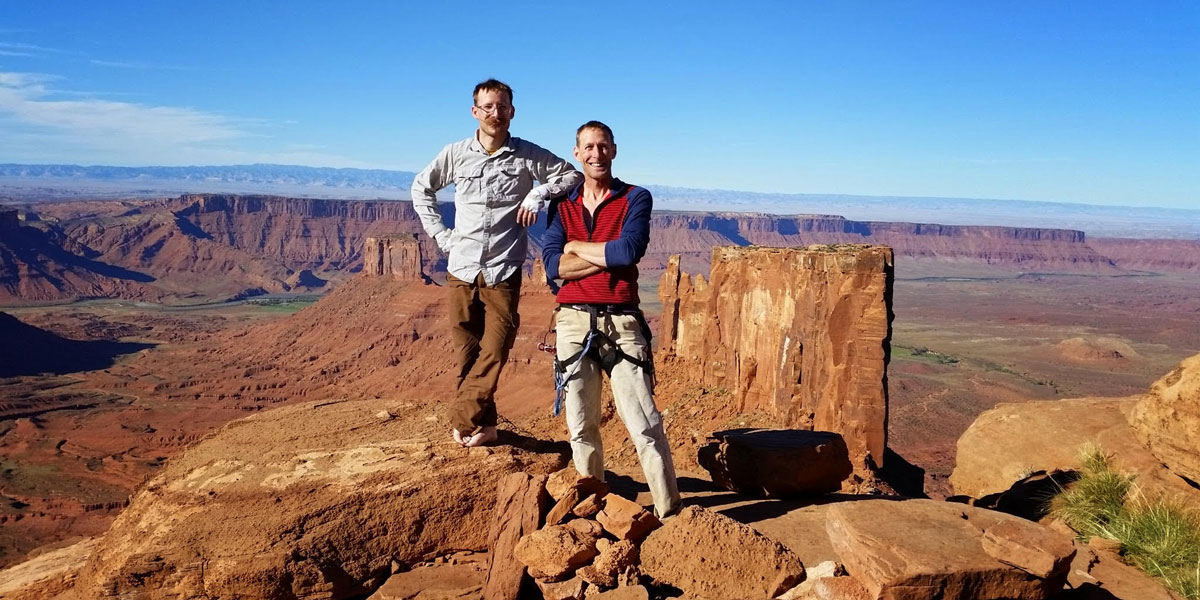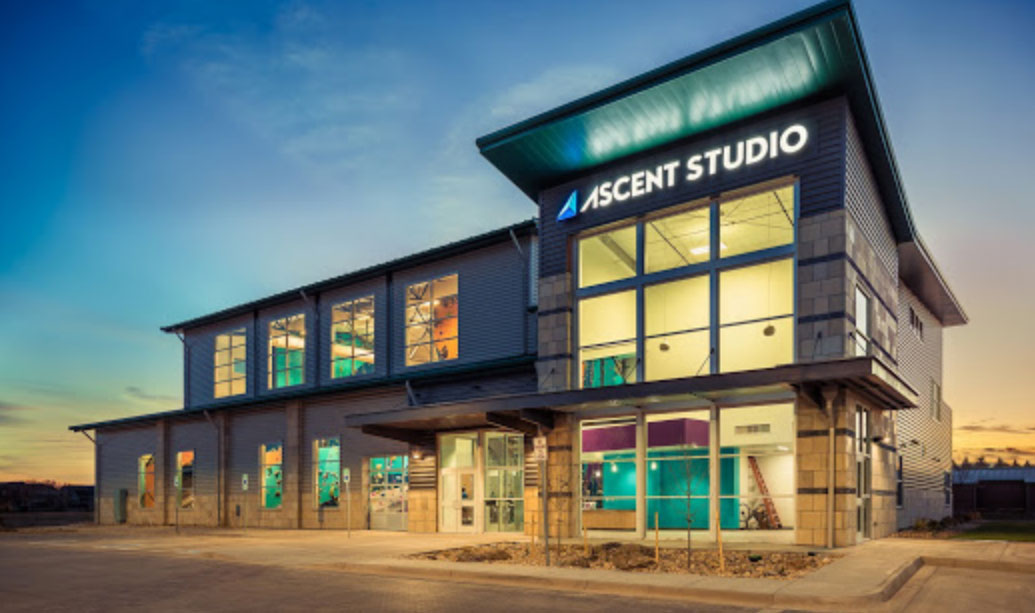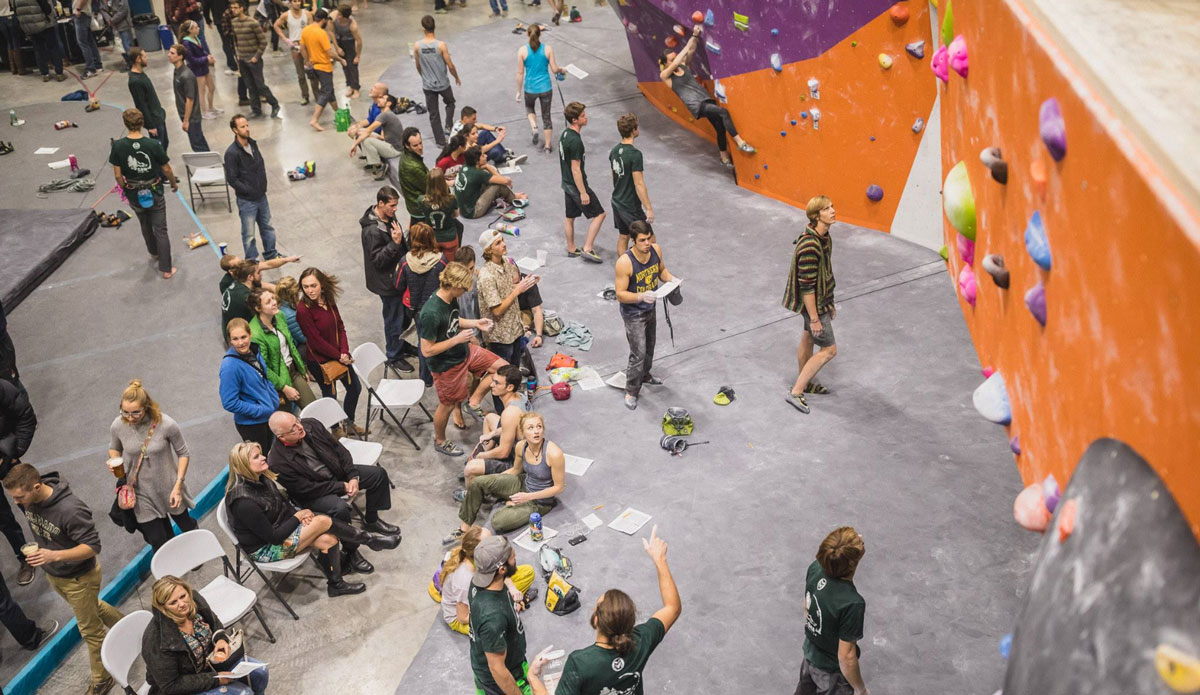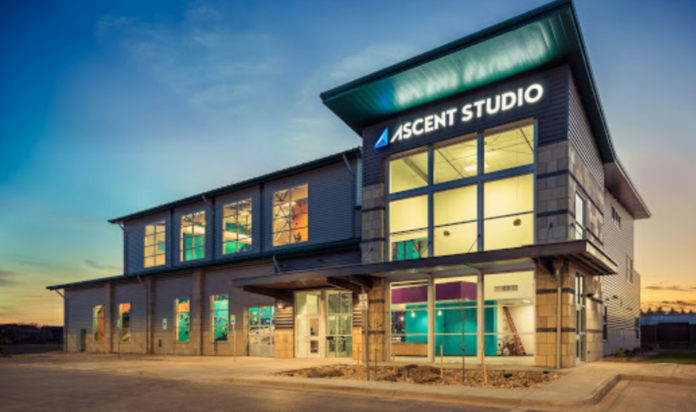Behind the Desk…is an ongoing series that profiles people influencing and advancing the industry in gyms from coast to coast. For this installment, CBJ explores how a long-time climber’s background in technology was uniquely applied to the climbing industry. But, in talking to Jon Lachelt, we also get psyched that maybe climbing will someday be a sanctioned sport at high schools across the nation.
In full disclosure, Lachelt has been an important part of CBJ for years as the mastermind behind our Gym Map which was first released almost 5 years ago. But his unique story is worthy of being told, regardless of his close affiliation with us.

Name: Jon Lachelt
Title: Owner, Ascent Studio
Location: Fort Collins, Colorado
CBJ: You have a background—and a previous career—in computer software development. That’s pretty unique, so how did the evolution happen, from software engineer to climbing gym operator?
LACHELT: I worked for Hewlett-Packard for almost 30 years before the transition. I had decided a few years prior that I didn’t want to continue as an engineer for the rest of my career, but back then I wasn’t immediately sure what I would do instead. I had never considered owning my own business before, so it took quite a while before I could convince myself that I could make a go of it with a rock gym.
Soon after I started considering the idea of opening a gym (2006), I ran across a notice in a forum on RockClimbing.com about a routesetting clinic being hosted at the soon-to-open Rock Club (in New Rochelle, NY). I got in contact with the owner and asked if I could come for a long week around the clinic and just hang out with him—doing whatever odd jobs he needed doing, so that I could pick his brain about the whole process. He was very gracious and I ended up staying at his house for the week and learned a lot about the process, and he even shared with me his pro-forma. Then, the next year (2007) was the first Climbing Wall Association Summit. At that Summit, I met so many gym operators/owners who were quite open and supportive of new potential gym owners. Simply knowing that the industry was so supportive and encouraging made the possibility of opening a gym much more tangible.
Finally, in 2013 HP offered an early retirement incentive and I decided to take it. I figured being ‘retired’ (read: ‘unemployed’) was the incentive I needed to actually overcome the inertia and security of a steady income in a comfortable job. And soon after that I connected with a truly retired friend from church who was intrigued with the idea of a climbing gym and willing to be a partner and investor. At that point I knew that my dream would actually become a reality.
Since there were not any available tall buildings in Fort Collins [Colorado], we had to build from the ground-up, which I was keen to do anyway since I knew that I wanted a very open structure with a lot of windows. That whole process of design and getting through the development planning with the city took another three years before we opened in November, 2016.

CBJ: Has your computer and technological background proved applicable in climbing in any ways?
LACHELT: I can’t say I’ve used my computer skills very much since leaving HP. Working on the CBJ Gym Map was probably the most significant thing I’ve done since then. That process started while I was putting together my business plan. I suppose I was—no, I actually was—a little OCD about making a complete list of all the gyms in the United States. I didn’t want to simply give vague estimations of how many gyms there were, and how many had closed, and how big they were. I wanted real data. So I compiled the most comprehensive list of gyms I could.
When Mike Helt [previous owner of CBJ] approached me about a collaboration on maintaining the database and creating an active, searchable map, I was pretty excited to figure out how to make it happen. That was a fun process that I have to admit was a nice distraction from the sometimes tedium of getting a loan, and the back-and-forth with the city planning folks.
CBJ: You also have a background as a climbing coach at Colorado High School. There are a lot of youth climbing teams these days, but not many that are directly affiliated with a school. How did that gig come about for you?
LACHELT: Well, I really have to be honest, I wasn’t much of a coach. I’m an average climber at best, and it’s hard to coach someone when they quickly get to be better than you are. A friend at the gym had started coaching a team comprised of any high school students in the Fort Collins area. As the team grew it seemed obvious that he needed another body to help, so I volunteered.
That team competed in the Colorado High School Climbing League (CHSCL), started by CityRock in Colorado Springs. The CHSCL provides a second avenue, in addition to USA Climbing, for students to get involved in competitive climbing. The CHSLC at least in form meshes with the familiar concept of representing their school in a sport they enjoy.
The difficulty of that is that climbing is rarely embraced by public high schools. They have a skewed perspective on risk and liability. One of the students in the league actually had the experience of talking with school administrators who said that students could have a school-sanctioned climbing club—as long as they didn’t actually climb. (The school’s insurance thought it would be too risky). To that I say, you’ve got to be kidding… you let kids play football for crying out loud…kids actually die as a direct or indirect result of participating in that sport (13 kids in 2017). As far as I know, in the whole history of youth indoor climbing competitions, I don’t think there have been any deaths.
Because of that the CHSCL operates apart from the normal high school sport ethos. Any liability is borne by the gyms and the association between the teams and their schools is pretty much at arm’s length.
CBJ: To that point, what factors would need to fall in place for more schools to have climbing teams on a widespread, national scale?
LACHELT: I think of three things. First, obviously the liability issue would have to be overcome for the schools to actually acknowledge that their students are participating in such a ‘dangerous’ sport.
Secondly, high school sports teams have a lot of rules around eligibility and coach-player interaction outside of the sport’s ‘season.’ Many organized sports don’t lend themselves to adults and youth rubbing shoulders while participating in the activity. But with climbing, whether it’s at the gym or at a crag, it’s really normal for youth and adults to be in the same space, working on the same problems/routes, climbing at the same crag, encouraging each other, sharing beta, etc. Climbing, at least in an outdoor context, depends on the concept of mentorship. To put artificial barriers in place to prevent ‘coaching’ from happening outside of a season would (in my opinion) change the nature of the activity. This is one reason the CHSCL has specifically not tried to come under the umbrella of the Colorado High School Sports and Activities Association (CHSSAA) that regulates all of its constituent sports.
Thirdly, gym space is at a premium. My gym, for instance, is busy enough that members sometimes complain about the climbing team getting in the way of their climbing. There simply are not enough hours in the day, or days of the week, for us to have two or three other teams trying to find time to practice that won’t negatively impact our members’ experience.

CBJ: How does a gym in Colorado like Ascent Studio find an identity when there are so many climbing options—both indoors and outdoors?
LACHELT: Good question. We are always trying to figure that out also. We’ve differentiated ourselves from the outset by our purpose-built facility. Of course, that can’t be the sole differentiator. A climbing gym is a lot more than the building and the walls. Our gym, and most forward-thinking gyms nowadays, are focused on how they can best support and grow the local and regional climbing community. A healthy climbing community means more customers and members. For us that means making many and varied opportunities for people to meet each other and connect around climbing and even non-climbing activities.
CBJ: I read an article where you cautioned against gym owners comparing their community to any other community. I think that’s great advice. What are some things a gym can—or should—do to bring out the strengths and uniqueness of the community in which it resides?
LACHELT: I think that comment might have been related to comparing your city/region to another similarly sized city and using the success (or failure) of a gym in that city as a basis for gauging the potential for your gym to succeed. We all know that there are many, many factors that feed into the success of a climbing gym. Population is one factor… maybe even just a small factor.
But to your question, one thing I love about climbing gyms is that each one is unique. Even the franchised gyms have unique walls, unique buildings, the type of climbing at their local crags is different, etc. Some gyms have an owner/manager with a lot of visibility in the greater climbing world (think Hans Florine at Diablo Rock Gym in Concord, California) or put up a lot of FAs in their local crags, but many gyms are run by a relative nobody in the climbing world (such as myself).
As for what gyms can specifically do, I think of two things: First, give your staff the opportunity to express themselves through the gym. If someone has an idea for a program to run, an event to host, or local charity to sponsor, figure out how to make it happen. Climbing gyms have so many avenues for the personalities of the staff and local community to be manifest. If you limit yourself to the ideas of the owner/manager, then you’re going to get a very narrow vision for what the gym could become. Second, if you have a local climbing advocacy group, then you really should look for ways to partner with them for events and support them as best you can.

John Burgman is the author of High Drama, a book that chronicles the history of American competition climbing. He is a Fulbright journalism grant recipient and a former magazine editor. He holds a master’s degree from New York University and bachelor’s degree from Miami University. In addition to writing, he coaches a youth bouldering team. Follow him on Twitter @John_Burgman and Instagram @jbclimbs. Read our interview Meet John Burgman, U.S. Comp Climbing’s Top Journalist.









